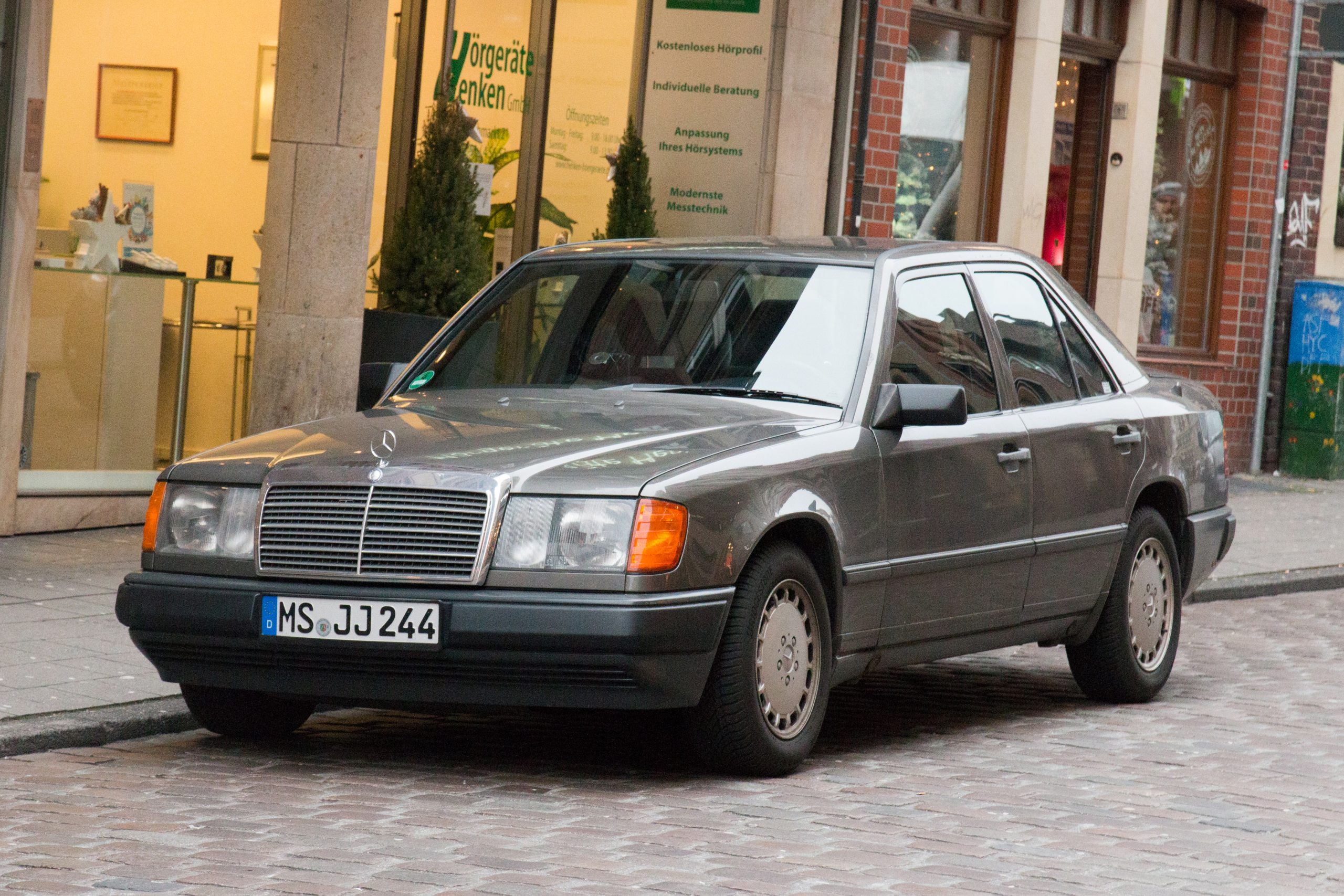Mercedes-Benz has long been synonymous with luxury, sophistication, and unparalleled engineering. As one of the oldest and most respected automotive brands in the world, the company has produced a wide array of sedans that have defined entire generations of car enthusiasts and luxury car buyers.
From the early days of the Mercedes 300 to the latest flagship S-Class sedans, the brand has consistently delivered vehicles that push the boundaries of performance, comfort, and style.
Some of these models have remained eternal symbols of automotive excellence, revered for their innovative technology, superb craftsmanship, and timeless appeal. Others, however, have not aged as gracefully and now serve as reminders of how the automotive world continues to evolve.
Throughout history, Mercedes-Benz has produced some of the most iconic sedans on the market, designed to cater to customers who demand more than just transportation—they demand luxury and prestige. In some cases, these vehicles have maintained their modernity for decades, despite the rapid technological advancements in the automotive industry.
Models like the W140 S-Class, for example, remain celebrated for their luxurious ride quality and technological advancements, despite being over 30 years old.
These cars transcend time because they were designed not just for the moment but with longevity in mind. They embody the Mercedes-Benz ethos of overengineering and timeless style, ensuring their place in the hearts of car collectors and aficionados.
On the other hand, certain Mercedes-Benz sedans have unfortunately lost their sheen over the years. While they may have been at the cutting edge of their respective eras, they now feel dated in comparison to modern offerings.
The W220 S-Class, for example, may have pushed boundaries in terms of technology and design when it was launched, but now it feels like a relic in a world dominated by seamless digital interfaces and more refined performance.
Similarly, the W203 and W202 C-Class sedans, once considered sleek and modern, now seem pedestrian compared to today’s compact luxury sedans, many of which have embraced more innovative styling and advanced technology.
So, what is it that sets apart the Mercedes-Benz sedans that continue to feel modern from those that have lost their edge? It’s not just about their exterior design, but rather their ability to evolve and remain relevant in an ever-changing automotive landscape.
Some of these cars have remained true to the Mercedes-Benz philosophy of luxury and innovation, with features like smooth, effortless driving dynamics, refined interiors, and cutting-edge technology that continue to impress even in the face of newer, more tech-heavy rivals.
Others, however, have failed to meet the lofty expectations set by their predecessors, losing out to more advanced alternatives that offer superior performance, better technology, and even more comfort.
In this article, we will explore five Mercedes-Benz sedans that have managed to feel modern forever, thanks to their exceptional engineering, cutting-edge technology, and timeless design.
We’ll also take a look at five models that have unfortunately lost their magic, with a closer examination of why these once-innovative vehicles now seem like dated relics of a bygone era.
Ultimately, we’ll see how Mercedes-Benz’s approach to luxury has both evolved and, in some cases, fallen behind the curve, making it clear that not all of the brand’s sedans have aged like fine wine. Some have been left in the dust, overshadowed by the forward march of automotive progress.
Also Read: 5 Cars That Rarely See the Mechanic And 5 That Practically Live There
5 Mercedes-Benz Sedans That Feel Modern Forever
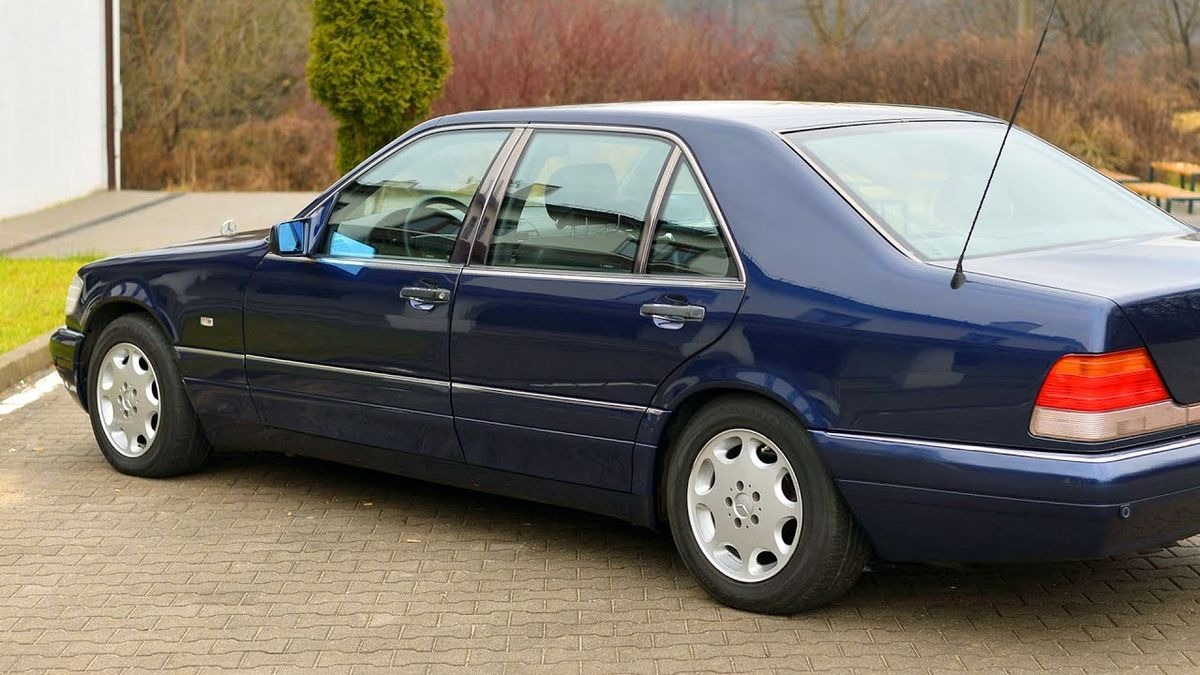
1. 1991–1996 Mercedes-Benz W140 S-Class
The W140 S-Class was not simply a replacement for its predecessor—it was Mercedes-Benz swinging for the fences, attempting to redefine what a flagship sedan could be.
Unveiled during a time of global economic uncertainty, the W140 arrived with bold proportions, overwhelming refinement, and the quiet confidence of a brand that wasn’t afraid to overbuild.
It was massive, unapologetic, and immediately divisive. But over time, the W140 earned its place not only as a luxury benchmark but also as one of the few vehicles that still feels permanently modern. Its clean lines, upright grille, and imposing road presence are just as stately today as they were three decades ago.
One of the W140’s enduring strengths lies in its engineering integrity. This was a car designed without regard to cost, crafted during a pre-accounting era when engineers led the charge and the bean counters followed reluctantly behind.
The result was a vehicle with features unheard of at the time: soft-close doors, double-pane acoustic glass, self-lowering side mirrors for parking, and even a motorized aerial guide rod that helped drivers avoid curbing the massive trunk.
These were not gimmicks—they were thoughtful details aimed at improving the ownership experience in ways most competitors never imagined. Even its optional V12 engine wasn’t about power for power’s sake—it was about delivering unshakable smoothness and prestige.
More than anything, the W140 feels modern because it was engineered ahead of its time. Even today, it competes with or surpasses newer cars in cabin silence, solidity, and ride quality.
Sitting inside a W140 feels like stepping into a protected space—where time slows down and the outside world is kept firmly at bay. Whether you’re navigating a chaotic urban street or coasting on a highway, the W140 remains composed and unbothered. It’s a car that didn’t just define luxury for the ’90s—it redefined what we expect from it now.
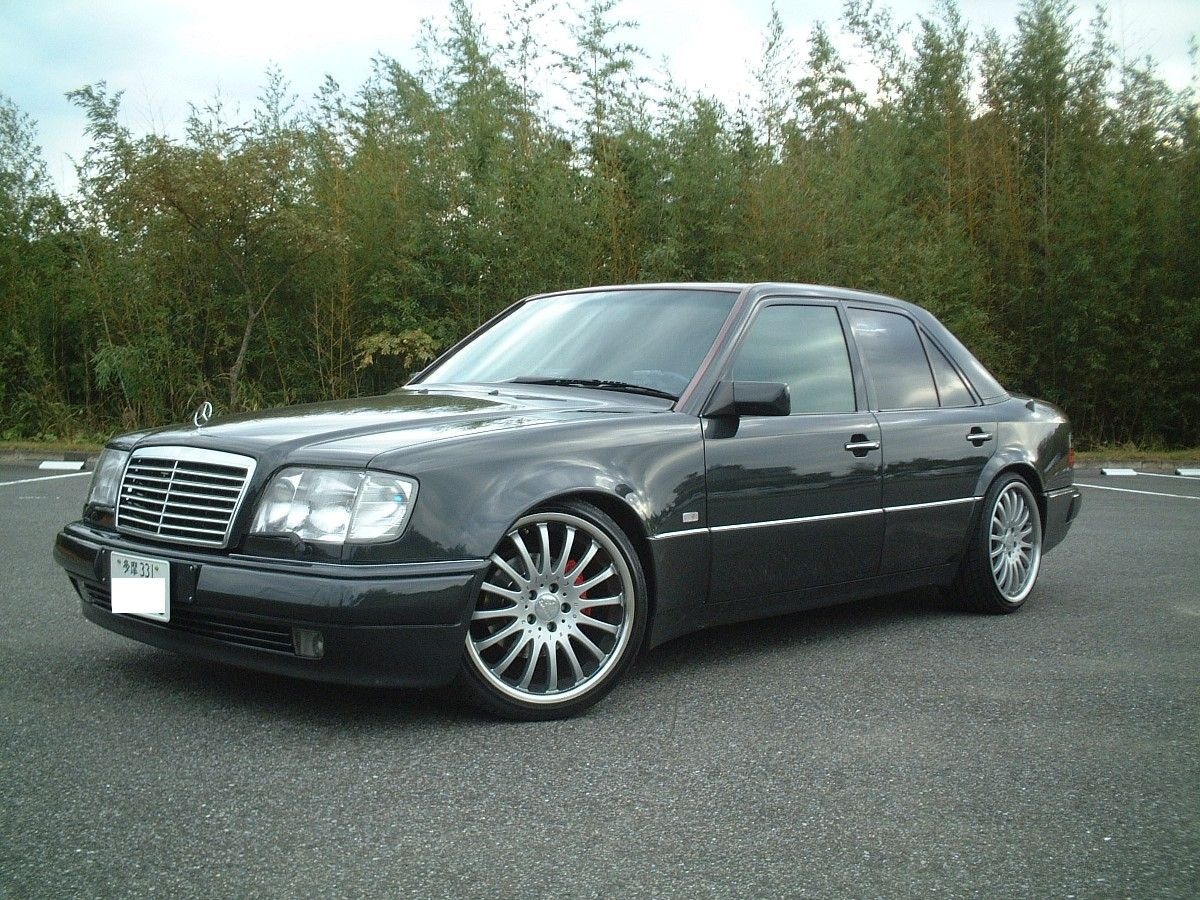
2. 1984–1995 Mercedes-Benz W124 E-Class
When Mercedes-Benz introduced the W124, it wasn’t just launching a new model—it was launching an icon. This car embodies the “golden age” of Mercedes design, where form followed function, but still arrived with elegance and presence. With its balanced proportions, simple yet purposeful lines, and meticulous build quality, the W124 manages to avoid looking dated—even decades later.
It’s the rare kind of sedan that you can park next to modern cars without it feeling like a relic. That’s because it was built not just for style, but for eternity.
Mechanically, the W124 was a masterclass in thoughtful engineering. Everything about the car feels purposeful. The doors close with a bank vault “thunk,” the switchgear feels overbuilt, and the dashboard layout emphasizes clarity and accessibility over flash. Underneath, the W124 was ahead of its time.
It pioneered Mercedes’ now-legendary five-link rear suspension, which provided a ride that was both supple and responsive—a balance few luxury sedans achieve even today. The chassis dynamics feel tight and reassuring, whether you’re taking a highway sweep or maneuvering through city traffic. It’s not sporty, but it is confident—a characteristic that translates directly into long-term relevance.
Where the W124 truly shines, though, is in its aura of dependability. This is a car that you can drive daily, long past the 200,000-mile mark, and still feel like it hasn’t lost its edge. It’s not just nostalgia—it’s functionality. Many W124s are still on the road, running flawlessly, because they were designed to last.
In an era where most modern sedans are discarded or forgotten within a decade, the W124 continues to find new fans who recognize its timeless combination of durability, grace, and mechanical honesty.

3. 2006–2013 Mercedes-Benz W221 S-Class
The W221 S-Class was a turning point for Mercedes-Benz. Coming off the controversial and often-criticized W220, the W221 needed to reclaim the S-Class crown—and it did so masterfully. From the moment it debuted, the W221 exuded authority. It was larger, more sculpted, and far more elegant than its predecessor.
Yet its appeal went beyond styling—it marked a return to old-school Mercedes luxury with a new-school twist. The cabin was expansive and enveloping, filled with high-end materials and wrapped in a design that blended tradition with modernity. The W221 didn’t just feel premium—it felt important.
Technologically, the W221 was a giant leap forward. It introduced COMAND systems that actually worked well (finally), offered cutting-edge driver assistance packages, and brought innovations like Night View Assist, massaging seats, and radar-guided cruise control into the mainstream.
The suspension, particularly with the optional Active Body Control system, delivered an uncannily smooth ride. You could drive over broken pavement or potholes with barely a ripple reaching the cabin. It glided more than it rolled. This wasn’t just comfort—it was control disguised as effortlessness.
What makes the W221 feel modern even now is how effectively it masked its age through design restraint and mechanical polish. The interior, while clearly analog compared to today’s touch-heavy dashboards, is beautifully arranged and tactile in all the right places.
The proportions of the exterior remain classic—there’s no era-specific styling that dates the car. In fact, many late-model luxury sedans still borrow cues from the W221’s silhouette and stance. This is a car that you can still drive today without anyone realizing it’s over a decade old—and that’s the definition of modern forever.
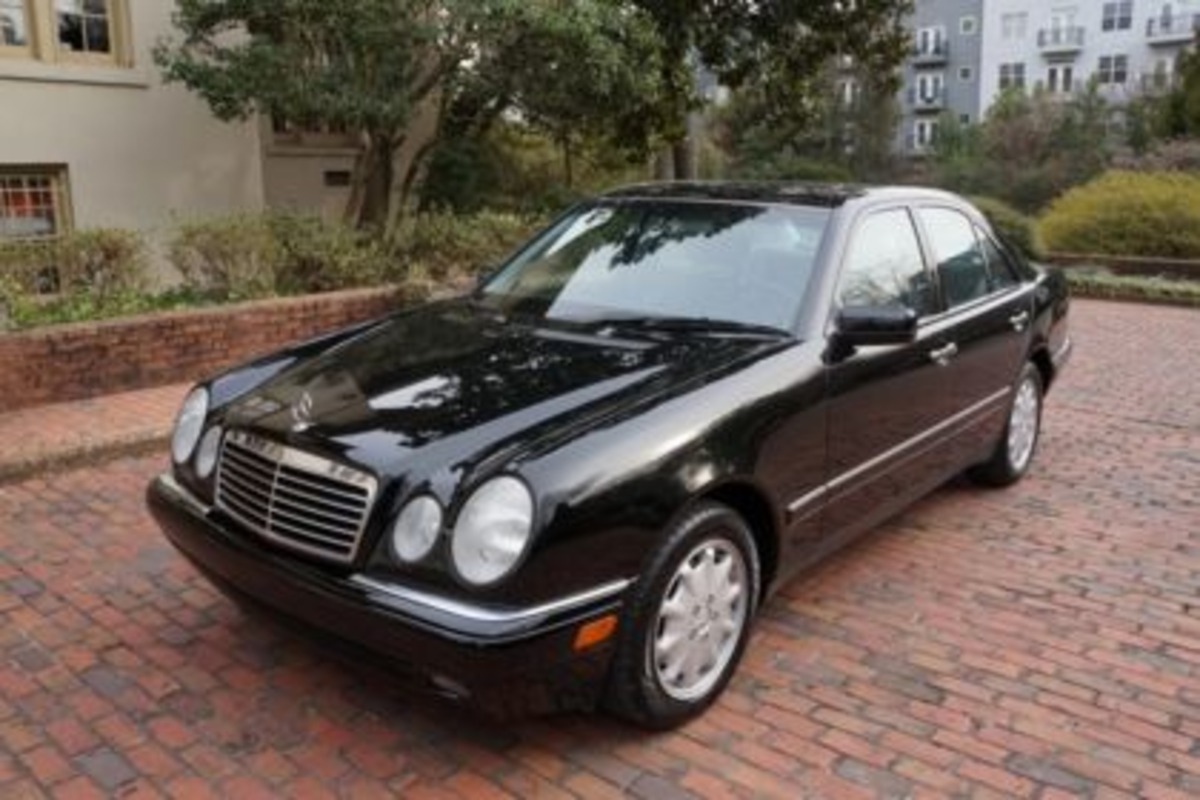
4. 1998–2005 Mercedes-Benz W210 E-Class (Facelift Models)
The early W210 E-Class models were a mixed bag—plagued with rust issues and questionable reliability. But starting around the 2000 facelift, Mercedes made serious improvements, and those later W210s became a bridge between analog Mercedes charm and modern usability.
In their best configurations—especially the E320 and E430—these cars struck a beautiful balance: the mechanical integrity of the W124 with the sleeker design and comfort upgrades expected in the new millennium.
The facelift models refined the look with clearer headlights, improved interior materials, and a more substantial ride. Today, a well-maintained late-model W210 can still pass for a much newer car in both feel and function.
One reason the W210 facelift has aged well is its mature, no-nonsense design. It doesn’t scream for attention, but it rewards long-term ownership.
The proportions are traditional and refined. The ride quality—thanks to Mercedes’ mastery of multi-link suspension tuning—remains plush yet connected, especially when paired with the naturally aspirated V6 or V8 engines.
The cabin ergonomics are refreshingly intuitive. Buttons are exactly where you expect them, and they actually click in a satisfying way, a far cry from today’s over-touchscreened interfaces. The analog gauges are easy to read, the seats are comfortable for long hauls, and the road isolation remains impressive for a car now entering its third decade.
These facelifted W210s are often overlooked in favor of their more beloved W124 ancestors or tech-laden W211 successors. But for those who value a car that’s simple, elegant, and still entirely usable by modern standards, the late W210 is a sleeper classic.
It doesn’t just hold up—it stands tall, offering a glimpse of how to merge past Mercedes ideals with 21st-century expectations. And because these models were built after Mercedes began course-correcting on cost-cutting measures, they tend to last, too—earning their place among the modern forever.
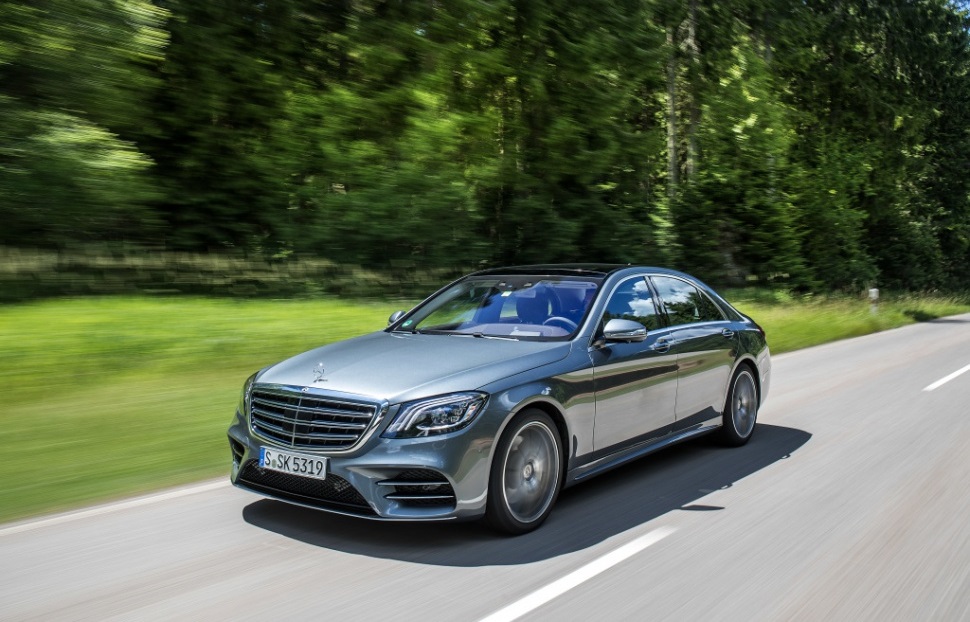
5. 2014–2020 Mercedes-Benz W222 S-Class
If any car defines what it means to be future-proof, it’s the W222 S-Class. Unveiled in 2014, the W222 arrived not merely as a luxury flagship but as an unambiguous technological statement. From ambient lighting to semi-autonomous driving systems, the W222 wasn’t just advanced—it was prophetic.
The exterior design struck a delicate balance between grace and dominance, and it aged with remarkable poise. A W222 rolling down the street in 2025 still looks like it belongs. It’s sleek without being trendy, powerful without being brash, and elegant in a way that transcends fads.
Step inside, and the W222 continues to impress. The twin-screen setup for the instrument cluster and infotainment system became the layout nearly every luxury car now imitates. The quality of the interior materials—particularly in S560 and Maybach trims—rivals that of ultra-luxury brands.
The seats coddle you, the air suspension makes bumps disappear, and the cabin is so silent it feels like time stops once the doors shut. Everything in the W222 was designed not just to compete with rivals, but to render them irrelevant. Even in a post-Tesla era, few cars match the holistic luxury this S-Class provides.
What keeps the W222 eternally fresh is its foundational philosophy: innovation with restraint. Unlike some of its competitors, the W222 didn’t need wild styling or gimmicks to feel advanced. Its value came from integration—everything worked together to elevate the driving and passenger experience without ever feeling forced.
It offered the kind of luxury that doesn’t age, because it doesn’t pander. For many, it remains the high-water mark of modern Mercedes-Benz—and a clear reminder that luxury isn’t about being loud; it’s about being right.
5 Mercedes-Benz Sedans That Don’t Feel Modern Anymore
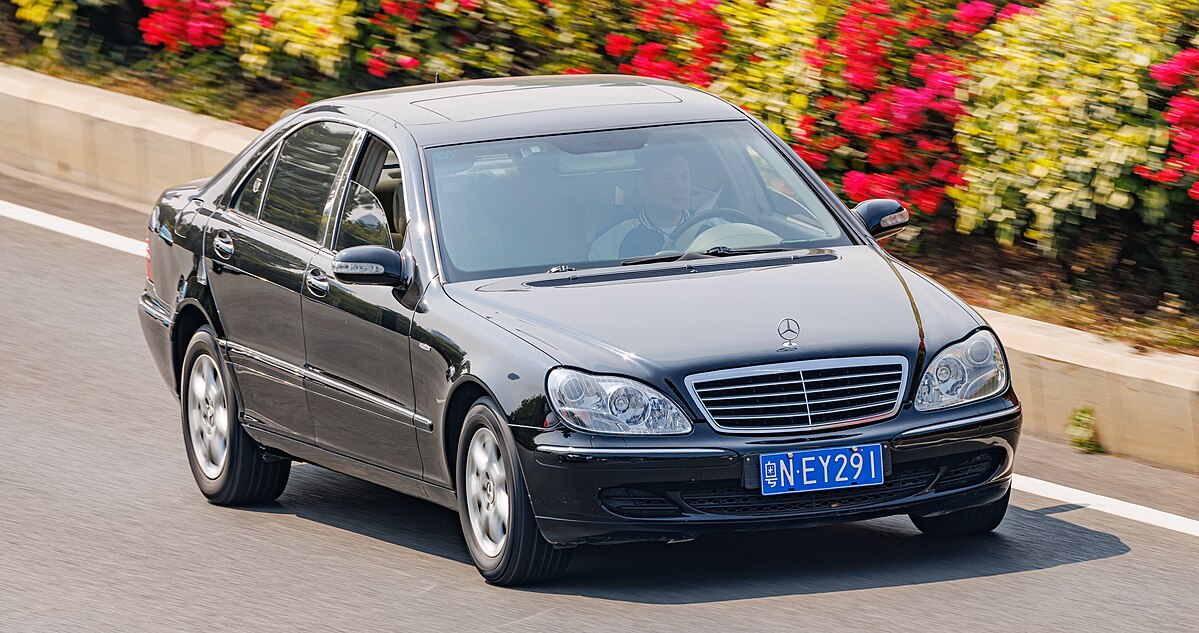
1. 1999–2006 Mercedes-Benz W220 S-Class
When the W220 S-Class debuted in 1999, it marked a radical departure from the commanding presence of the W140. It was smaller, sleeker, and more “organic” in design—an effort to modernize the S-Class for a new, more efficiency-conscious era. While the W220 looked elegant at launch, it hasn’t aged well.
The once-smooth lines now appear soft and overly conservative, especially compared to the bold styling of today’s luxury sedans.
The exterior design lacks the gravitas that defined earlier S-Class models. What was once cutting-edge now looks oddly anonymous, especially from the rear. Without the visual weight of its predecessor or the sharpness of its successors, the W220 feels stuck in a stylistic limbo.
But the real issues go beyond aesthetics. Mercedes-Benz was aggressively cutting costs during the development of the W220, and it shows. The interior materials—particularly on early models—were a sharp downgrade from the W140’s vault-like quality. The wood trim was thinner, the plastics less refined, and the switchgear had a fragility that betrayed the car’s six-figure price tag.
Early versions of the COMAND infotainment system were clunky and frustrating, while the optional features often felt more like unfinished experiments than polished luxuries. Combine this with spotty reliability—air suspension failures, faulty electronics, and expensive repair bills—and it’s no surprise the W220 has a reputation for aging poorly.
Mechanically, the W220 never inspired the confidence one expects from an S-Class. It lacked the rock-solid road feel of the W140, and even though it was lighter and supposedly more agile, it never felt particularly composed or refined. The driving experience is competent but uninspiring, and the cabin doesn’t cocoon its passengers in the way Mercedes once mastered.
While the W220 did bring some tech advancements, like Distronic adaptive cruise control and keyless entry, they were so early in their development that they now feel outdated or unreliable. Time hasn’t been kind to the W220—and that’s why it fails to feel modern today.
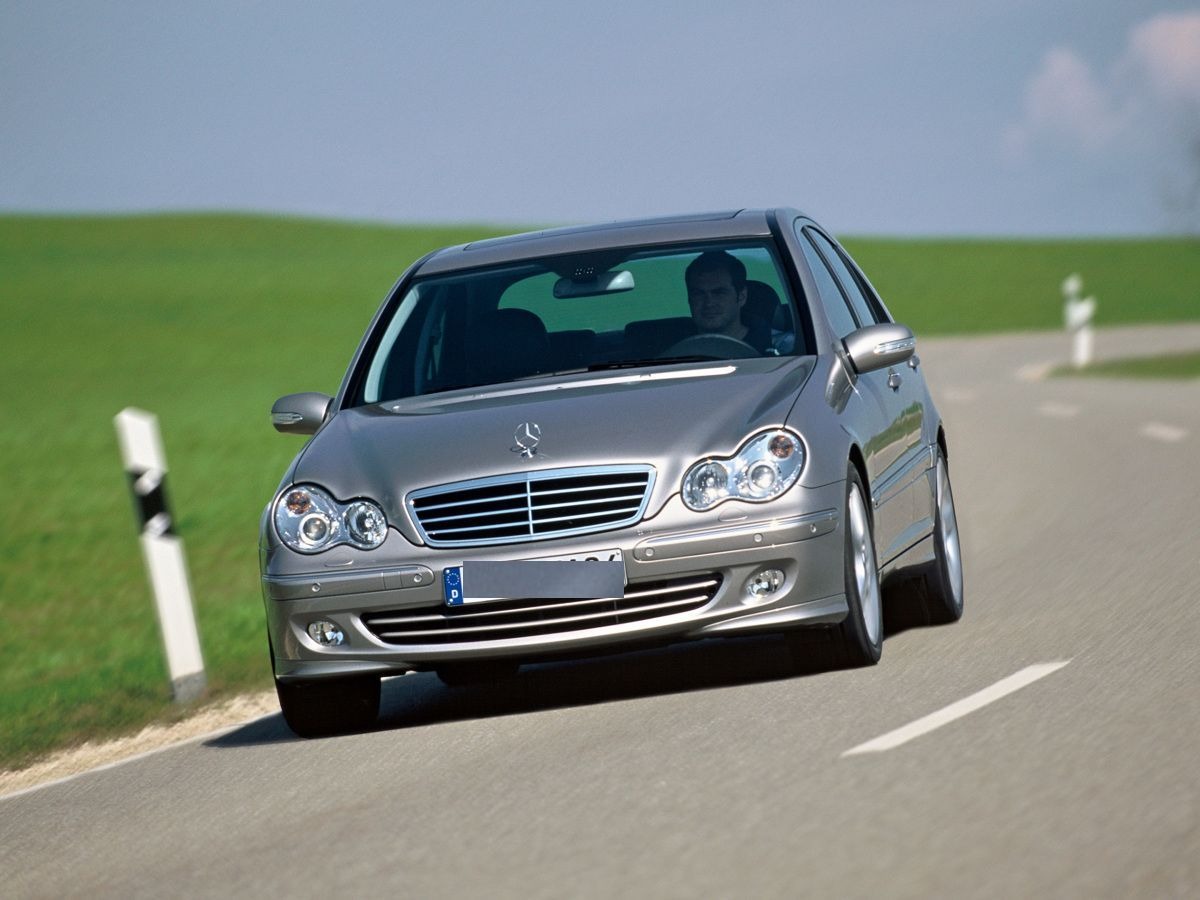
2. 2000–2007 Mercedes-Benz W203 C-Class
The W203 C-Class had the unenviable job of following up the beloved W202, and while it aimed to bring Mercedes into a new millennium with updated design and tech, it ended up being one of the more forgettable chapters in the brand’s history. At launch, it was considered sleek and refined, but by today’s standards, the design has aged awkwardly.
The rounded headlights, slab sides, and modest dimensions don’t convey either the assertiveness or elegance we expect from a Mercedes-Benz. Park one next to a modern C-Class or even a recent Toyota Camry, and the W203 looks significantly more dated than it should for its age.
Inside, the story isn’t much better. The cabin lacks the durability and premium feel associated with Mercedes. Plastics wear quickly, buttons fade or become sticky, and the wood trim, where present, feels more like an afterthought than a luxury touch.
The dashboard layout is generic, and the basic digital displays now feel completely obsolete. Even the steering wheel and gear selector feel more budget-brand than premium.
In an era where interior refinement has become a battleground in the luxury segment, the W203 has fallen far behind. It simply doesn’t offer the sense of craftsmanship or ambiance that Mercedes is known for.
Driving the W203 is also a forgettable experience. While the ride quality is decent, the steering feels vague, and the suspension doesn’t strike the same balance between comfort and agility that its successors perfected. Engines were fine for their time, but they haven’t aged gracefully, especially with the growing expectations for smoothness and efficiency.
With modern compact luxury sedans offering advanced suspension, hybrid drivetrains, and intuitive infotainment systems, the W203 feels outgunned and underwhelming. It was a stopgap car—functional, but lacking the timeless magic that defines lasting Mercedes models.
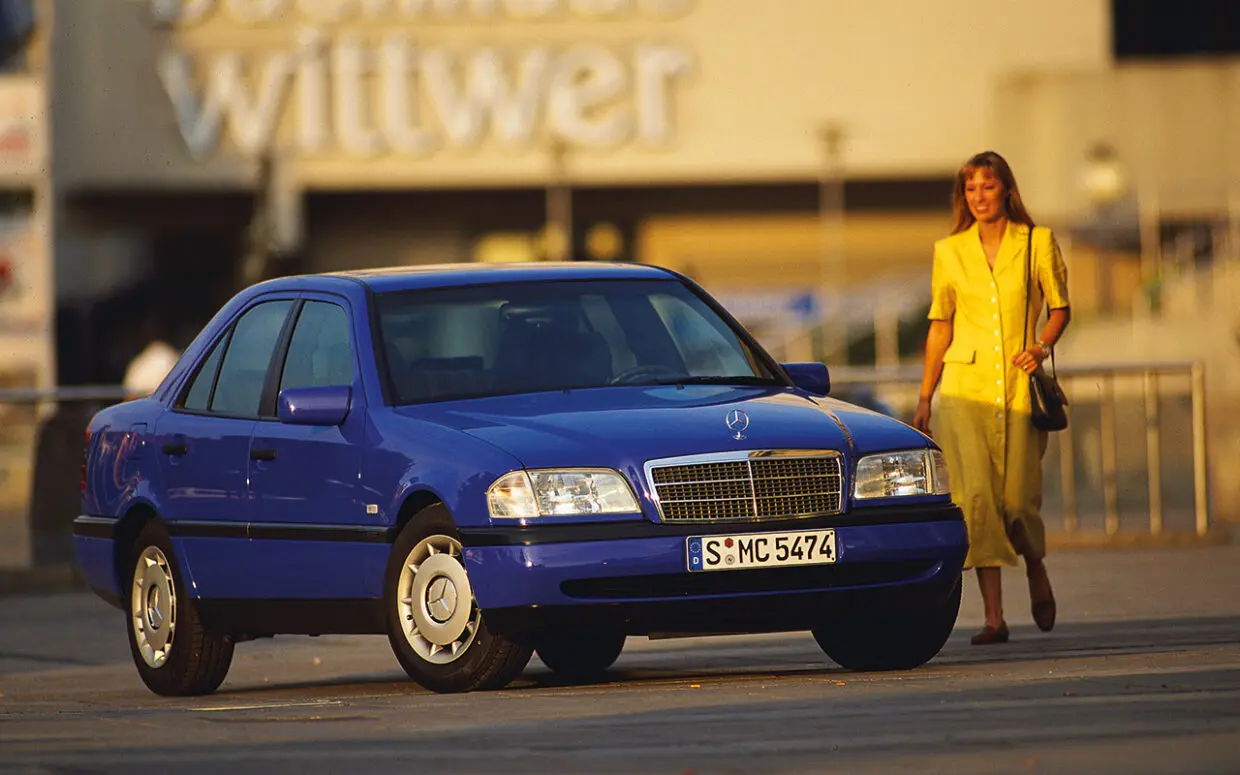
3. 1993–1997 Mercedes-Benz W202 C-Class
The W202 was Mercedes-Benz’s first attempt to build a true compact luxury sedan, and while it set a strong foundation for what the C-Class would become, it now feels very much like a product of its time. When it launched, it was a big deal—bringing Mercedes prestige to a more accessible segment.
But in retrospect, the W202 lacks the design and mechanical depth that make other older Mercedes sedans feel perpetually relevant. Its exterior is plain to the point of anonymity.
The boxy shape and basic detailing make it hard to distinguish from lower-tier cars of the same era. While that squared-off silhouette has some charm today, it hasn’t aged with the dignity of other Mercedes designs.
The interior is functional but basic. The dashboard is Spartan, the seats lack lateral support, and the tech is virtually nonexistent. Unlike the W124 or even early E-Class models, there’s little in the way of innovation or lasting quality inside the W202. Controls feel cheap, surfaces wear easily, and insulation from road noise is minimal.
Even the driving position feels a bit outdated, with a tall seating height and limited adjustments. You don’t get the sense that this was designed to pamper—it was meant to get the Mercedes badge onto more driveways, and that mission is evident in the compromises made throughout the cabin.
Performance-wise, the W202 offers a decent ride but nothing remarkable. Handling is competent but uninspiring, and the engines—especially the base four-cylinders—feel sluggish by today’s standards. Reliability was better than the W203 that followed, but the W202 never quite felt like a baby Benz in the way it was marketed.
It lacked the smoothness, grace, and character that made other Mercedes sedans memorable. While it helped lay the groundwork for the C-Class dynasty, the W202 now feels like a historical stepping stone rather than a model worth revisiting.

4. 2003–2009 Mercedes-Benz W211 E-Class (Pre-Facelift Models)
When the W211 E-Class debuted in 2003, it was supposed to be the tech-forward evolution of the storied W210. But early examples of the W211 suffered from one of the worst combinations a Mercedes can have: futuristic ambition with fragile execution.
The design was sleek and curvier than its predecessor, but the pre-facelift models, especially from the first few years, now look awkwardly dated.
The oval headlights haven’t aged well, and the car lacks the sharp lines or muscular proportions that make other E-Class generations feel timeless. As a result, the W211 doesn’t command attention on the road—it blends into traffic like any aging mid-size sedan.
Step inside, and the disappointments continue. While the cabin was an upgrade in layout compared to the W210, many of the materials feel plasticky and prone to wear, particularly around the center console and door switches.
The early COMAND system is painfully outdated now, with laggy inputs and a clunky interface that makes even the most basic infotainment tasks feel like a chore.
The analog-digital hybrid gauge cluster looked futuristic in 2003, but it now feels half-baked compared to the clean analogs of the past or the full-digitals of today. Even the wood trim feels more like filler than luxury—a stark contrast to the W124’s genuine craftsmanship.
Under the skin, the W211’s early reliability issues have further eroded its appeal. Problems with air suspension, SBC brake-by-wire systems, and various electronics were common. These flaws didn’t just hurt the ownership experience—they undermined confidence in the car’s long-term viability.
Later W211 models, particularly after the 2006 facelift, resolved many of these problems and improved interior refinement, but the early models remain mired in reputational damage. While the W211 had potential, its early missteps and rapidly aging design mean it no longer feels like a modern or enduring expression of Mercedes-Benz excellence.
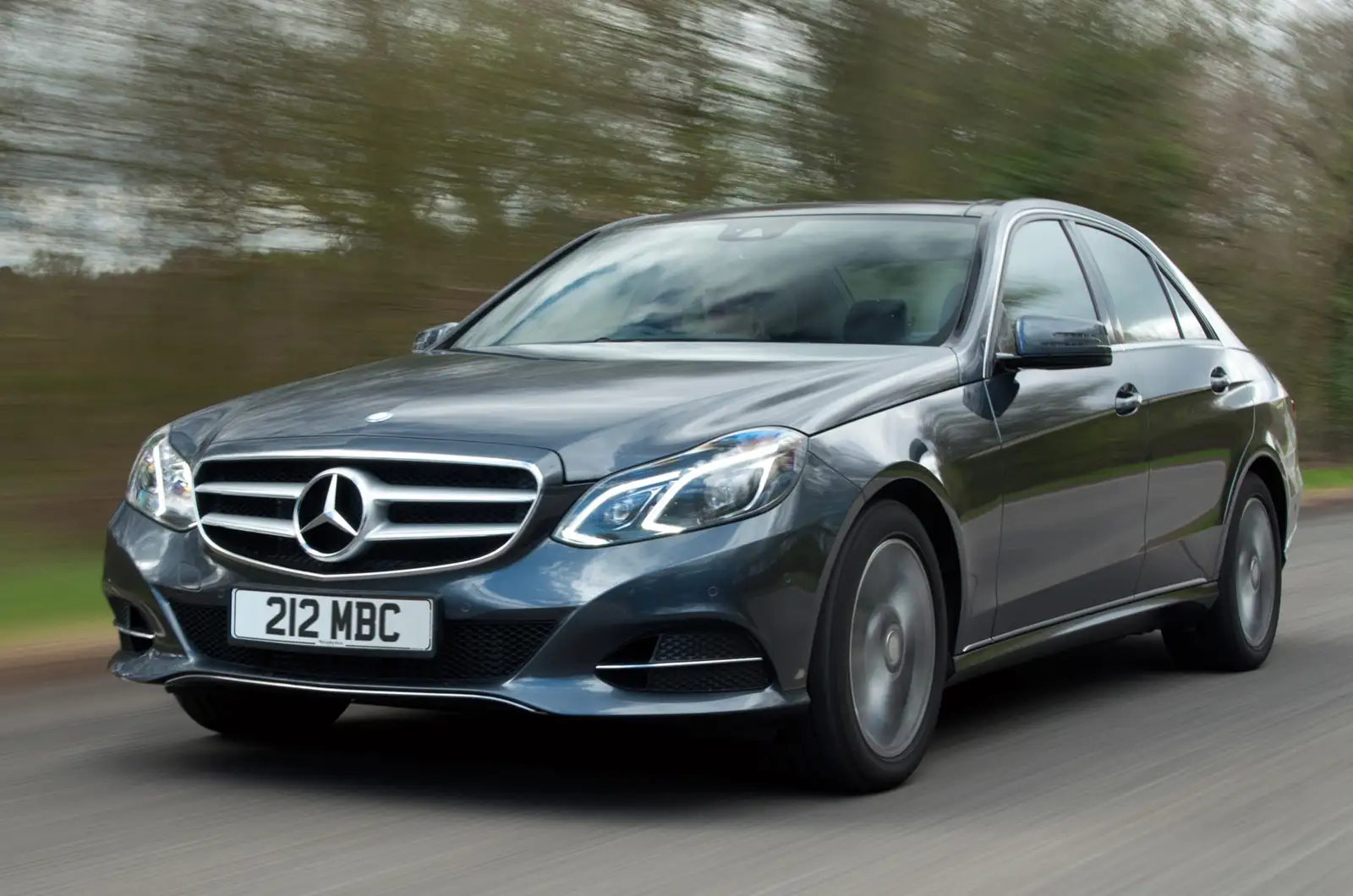
5. 2011–2014 Mercedes-Benz W212 E-Class (Pre-Facelift)
The pre-facelift W212 E-Class launched with high expectations, offering angular styling, new tech, and a promise to restore the E-Class to its former glory after the mixed reception of the W211. But in hindsight, this early version of the W212 hasn’t aged gracefully.
The exterior design is aggressive but somewhat clunky, with overly sharp headlights, awkward side sculpting, and a rear that lacks coherence. While bold in its time, the styling now feels like an attempt to chase trends rather than define them—a mistake for a brand known for timeless shapes.
Later facelifts softened the design and added elegance, but the original version remains stuck in an era of forced edginess.
Inside, the W212 initially impressed with tech and layout improvements, but even these haven’t held up as well as hoped. The hard buttons crowding the dashboard feel outdated, and the early iterations of COMAND are sluggish compared to today’s responsive systems.
The materials, while better than the W211, still don’t match the sense of occasion found in higher-tier models—or even later W212 updates. There’s a noticeable gap between what the car wanted to be and what it actually delivered. It’s a comfortable car, but it doesn’t immerse or inspire the way an E-Class should.
Mechanically, the W212 drove well enough. The chassis was more rigid, the engines smoother, and the suspension better tuned than its predecessor.
Also Read: 5 Cars With Easily Accessible Spark Plugs And 5 That Take Hours To Change
Mercedes-Benz has a legacy that is defined by its innovation, luxury, and commitment to creating vehicles that not only meet the demands of their time but also aim to transcend it. From the sleek lines of the W124 to the tech-laden S-Class models of the 21st century, the brand has always placed itself at the forefront of automotive design and engineering.
Yet, as we’ve seen with both the sedans that still feel modern and those that have lost their edge, not all Mercedes-Benz vehicles age with the same grace.
The cars that have retained their “modern forever” status share a few common characteristics: they were over-engineered with attention to detail, they embraced technology at the right moment without going too far, and they stuck to Mercedes-Benz’s fundamental values of comfort, durability, and understated luxury.
The W140, for instance, continues to stand as an automotive icon thanks to its bulletproof build quality and pioneering features that remain relevant today. Meanwhile, the W212, while certainly a worthy E-Class model, found itself overshadowed by better and more refined versions of the same ethos as the years went by.
It represents the kind of cautionary tale that reminds us that not all advancements in design or tech are necessarily improvements. Some features that were cutting-edge at launch now seem cumbersome and outdated, such as the earlier versions of the COMAND system or the peculiar styling that hasn’t aged as well.
Ultimately, the story of Mercedes-Benz sedans—and indeed, the story of the automotive world itself—is a tale of constant evolution. Each new model is built with the knowledge and understanding of the ones that came before, with the hope that it will stand the test of time.
But just like any industry driven by technology and style, some vehicles inevitably fall out of favor. A car that was once considered revolutionary can quickly become obsolete, leaving its owners with a vehicle that no longer feels special or unique. That’s the harsh reality of luxury cars in a fast-moving world where technology advances by leaps and bounds, and trends change almost overnight.
Nevertheless, the sedans that have held onto their modernity over the years serve as a testament to the true excellence that Mercedes-Benz is capable of. These models were not just products of their time; they were ahead of their time. They’ve weathered the storm of technological advancements, shifting market demands, and evolving consumer tastes.
And they’ve done so because they were created with the mindset of not just meeting expectations, but exceeding them. The W221, the W140, and the W212 facelift models all represent Mercedes-Benz at its finest, where form, function, and technology work in harmony to create a vehicle that doesn’t just survive—it thrives.
In contrast, the models that have lost their magic remind us that even the most prestigious automakers are susceptible to the fickle nature of automotive trends. The W220, with its questionable build quality and premature technology, was an attempt to modernize but ultimately left owners with a car that felt hollow in its execution.
Similarly, the W203 and W202 C-Class models, while competent in their time, are now relics that fail to capture the same aura of luxury that modern Mercedes vehicles so easily evoke. They may have set the stage for future success, but today they seem disconnected from the cutting-edge vehicles that define the current generation.
At the end of the day, Mercedes-Benz’s enduring legacy is tied to its ability to create vehicles that push the boundaries of what’s possible, but also to its understanding of when to evolve and when to preserve what has made it a symbol of prestige for decades.
As the automotive industry continues to evolve, embracing electric vehicles, autonomous driving technology, and even more advanced connectivity features, Mercedes-Benz’s challenge will be to continue blending its storied heritage with the ever-changing demands of the modern consumer.
The sedans that have remained timeless provide a blueprint for how to approach this delicate balance, while the ones that have lost their magic serve as a reminder that nothing, no matter how luxurious, is immune to the passage of time.

